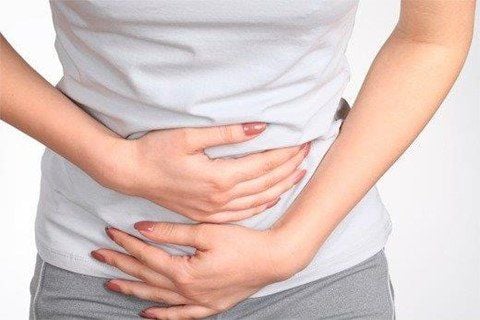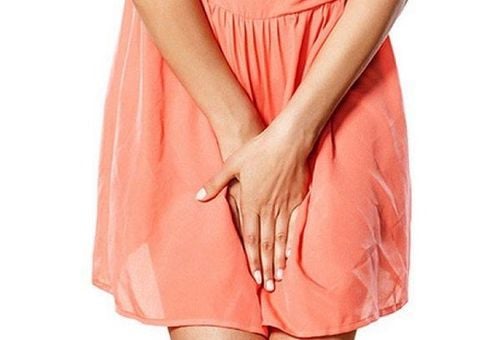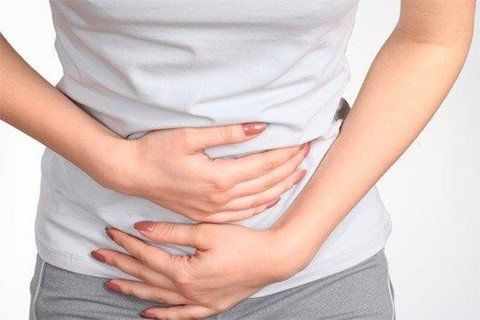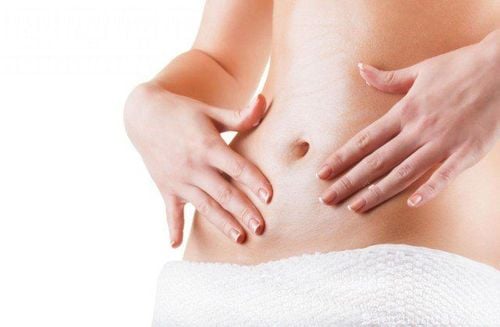This is an automatically translated article.
Surgical suture of the uterus to the protrusion is an effective technique in the treatment of genital prolapse. The surgery is less dangerous with a high success rate (96%) along with many advantages such as pain relief, time and cost of hospital stay to help women recover quickly and return to normal activities.1. What is genital prolapse?
Genital prolapse is a condition in which the uterus drops down. Depending on the severity of the disease, the uterus can be slightly prolapsed from the vagina to completely prolapsed outside the vulva. Genital prolapse is often accompanied by prolapse of the anterior vaginal wall and bladder or posterior wall of the vagina and rectum.The disease is more common in women during menopause or perimenopause, multiple births, heavy labor, and poor nutrition. The disease can also occur in young women of childbearing age.
Genital prolapse causes certain difficulties in daily living, labor and a number of other complications. Indications for laparoscopic hysterectomy apply to patients with grade II and III genital prolapse.
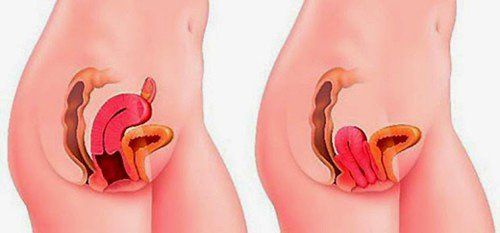
Sa sinh dục là hiện tượng tử cung sa xuống thấp
2. Method of suturing the uterus to the apex
The technique of suturing the uterus to the protrusion is performed in the following order of steps:Step 1: Aspiration of 3 trocarts (trocart 10 carries the bronchoscope at the umbilicus, trocart 5 maneuvers with instruments on both sides of the iliac fossa), Trendelenbourg position (low head position). A trocart is a medical device with a metal or plastic tip, a cannual (hollow tube) and a seal, that is placed through the abdomen during laparoscopic surgery.
Step 2: Observe the abdomen and pelvis to identify important anatomical landmarks including protrusion, sacral ligament, anal crest, and bladder folds.
Step 3: Open the peritoneum anteriorly to the sacral ligament, dissect to reveal the protrusion.
Step 4: Open the bladder peritoneum to push the bladder away and expose to the anterior vaginal wall.
Step 5: Open the posterior wall peritoneum at the top of the anus, push the rectum away and expose to the posterior vaginal wall, the levator muscle.
Step 6: Fix the insoluble synthetic graft (polypropylene) on the vagina and the fascia of the uterus in the anterior and posterior walls, the uterine ligaments, and hang the graft on the protrusion afterwards, covered with peritoneal cover the whole puzzle piece.
Step 7: Check for bleeding, remove CO2 and close the abdomen, check for uterine retraction.
3. Advantages of the method of suturing the uterus to the aluminum apex
The method of suturing the uterus to the protruding process is applied to women with grade II and III genital prolapse, with uncomfortable manifestations, greatly affecting sexual activities and daily activities. Patients can choose between open surgery or laparoscopic surgery. However, laparoscopic surgery is preferred because it has more advantages.Laparoscopic suture surgery has many advantages as follows:
Mild pain after surgery Fast recovery time, quick return to daily work Low risk of infection Short hospital stay The cost of treatment is reduced. Scar after small surgery The surgical process is safe, with fewer complications than open surgery. In particular, 3D laparoscopic surgery also offers many outstanding advantages such as a more spacious operating room, more clearly visible organs, helping to reduce the rate of complications during surgery. The success rate after laparoscopic appendectomy for genital prolapse is 96%. This is a rather complicated technique. In Vietnam, there have been no reports of 3D laparoscopic surgery hanging on the protrusion.
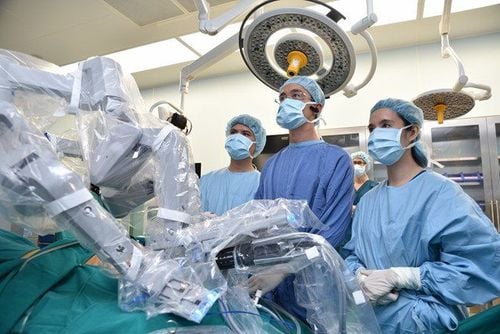
Phẫu thuật nội soi điều trị sa sinh dục
4. Why should hysterectomy be performed to treat genital prolapse at Vinmec?
Experienced doctors in Obstetrics and Gynecology. Modern equipment, high treatment efficiency. Professional services: Modern civilized disease prevention system, comprehensive care, meals, rest, exercise, health education, each room is equipped with amenities like a hotel apartment 5 stars, patient information is confidential. Hybrid operating room is the most modern operating room system in the world today, integrating operating room and advanced imaging equipment (CT scan, MRI, ultrasound...) to help reduce surgery time. and bring the best surgical results for the patient. In anesthesia resuscitation, Vinmec adheres to anesthetic protocols, anesthesia safety guidelines, anesthesia checklists for 100% of surgeries to minimize incidents and unwanted effects.Please dial HOTLINE for more information or register for an appointment HERE. Download MyVinmec app to make appointments faster and to manage your bookings easily.





